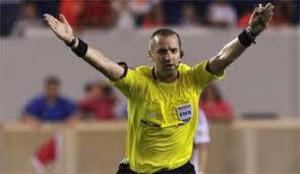The Advantage Rule in Soccer
Sunday, November 5, 2017

In my last post I happened to mention the Advantage rule as being one of soccer’s more mysterious concepts. Based on reader feedback, that little tidbit didn’t slide by unnoticed. Turns out, it’s a mystery that quite a few people wouldn't mind some help in solving. So, as I can shed some light on the topic while exerting minimum effort, I will again dip in to the Happy Feet well, where this topic isn’t only addressed, it’s brought to life by the magic of video – in color and everything!!! So for all of you struggling to make heads or tails of soccer’s Advantage rule (or clause or whatever it’s officially referred to), I give you this excerpt from Happy Feet:
Are you familiar with the NFL? If you are, you know that when one team is flagged for a penalty, the other team has the option of declining that penalty. The advantage rule is very similar, except it is the referee who decides, during the run of play, if a team that was fouled is better served by not having that foul called. For example…
A midfielder sends a beautiful pass in behind the opponent’s defense and her teammate who receives that pass is going to have an excellent chance to score. However, just as the midfielder released her pass, she was fouled by an opponent. The referee has a choice to make: either call the foul and award a free kick, or invoke the advantage rule and see how things play out. The referee may decide that calling the foul would actually do more harm to the attacking team (negating their ADVANTAGE) and apply the advantage rule.
The point of the advantage rule is to not reward a team for fouling an opponent and to avoid punishing a team that has been fouled. This is often an exceptionally difficult call, even for the very best referees, because they have to evaluate the circumstances very quickly and reach a decision.
Referees are granted a little leeway should they decide to invoke advantage. For starters, if it quickly becomes clear that no advantage would materialize, the referee may change his mind, whistle the foul and award the free kick.
If the referee deems that the foul was worthy of a yellow or red card (caution or ejection), he can still elect to apply the advantage and then at the next stoppage, caution or eject the player who committed the foul.
The advantage rule, although absolutely stellar in theory, is much more difficult when it comes to practical application. Referees must make a snap judgment while everything around them is moving at breakneck speed. But when you’re on the sideline and you’re certain that you just saw a foul that went unwhistled, see if the ref is waving play on and shouting, “Advantage!” If he is, you’ll know what he’s talking about.
To see some excellent examples of the advantage rule being applied, check out the SoccerPepperTM Lesson 5 video entitled Advantage.
If you enjoyed this entry, I invite you to buy my book Happy Feet – How to Be a Gold Star Soccer Parent – Everything the Coach, the Ref and Your Kid Want You to Know. The ebook version contains seven live video links to videos like (and including) the one mentioned above to help you sort out some of soccer’s more mysterious concepts like positions, offsides, and systems of play. The book was written to help parents better understand the game and the important role they play in their child’s enjoyment of the soccer experience.